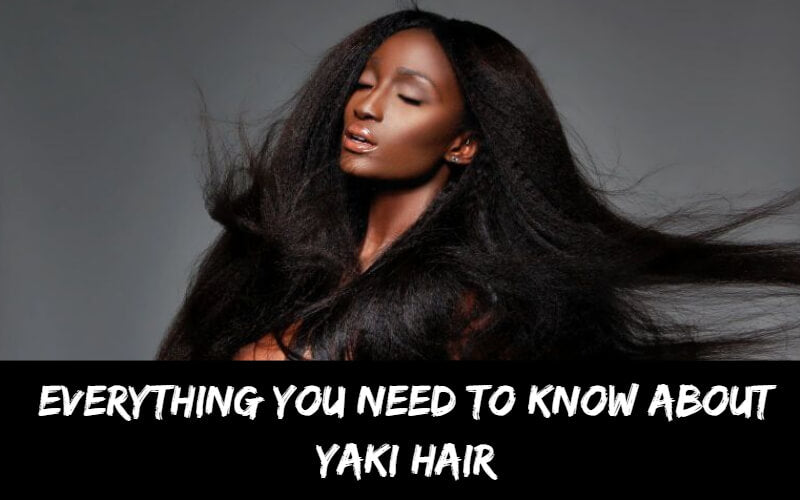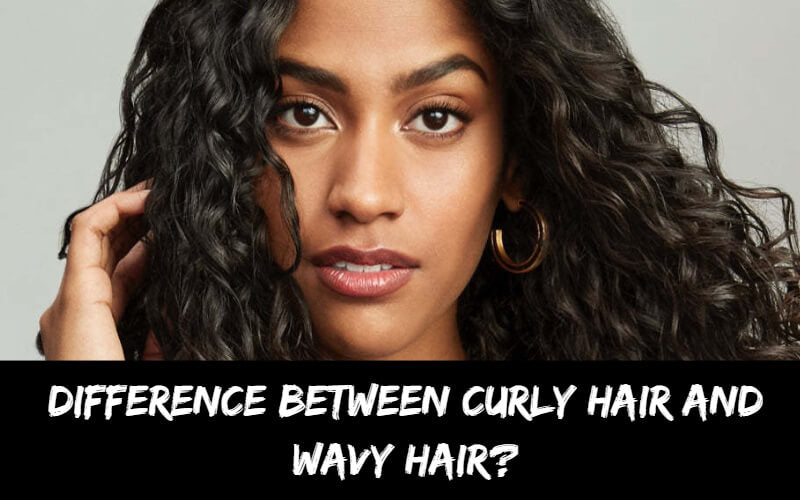
Yaki Hair is a great option for those who have chemically straightened hair but want longer hair with more body. Do you love the look of natural-looking hair with volume? If you have curly or kinky hair, then yaki hair may just be what you’re looking for.
In your search for the perfect hair and a new favorite hairstyle, you might have come across African and Caribbean hair extensions which often use yaki hair. If you’re interested in styling your hair with it, yaki hair definitely gets our stamp of approval.
Yaki hair extensions and weaves are quick and easy to get. Plus, you get a stunning new look without damaging your hair.
If you don’t know what yaki hair is and would like to learn more about it and its different styles, then this guide is just what you need.
Let’s get started.
What Is Yaki Hair?

Yaki hair is basically a type of hair extension that is chemically treated and made to look like natural black human hair.
It gives the appearance of thicker, fuller, more realistic hair. It’s best suited for those with type 3 hair (curly hair) and type 4 hair (kinky hair). They don’t blend as well with type 1 hair (straight hair) and type 2 hair (wavy hair).
If you want natural-looking black hair with greater volume, length, and thickness, then you should seriously consider yaki hair.
You can choose from straight, silky, or curly hair types. You can also select clip-on extensions if you want to accentuate the look of your natural hair or full wigs for complete coverage.
Yaki hair, as you may have guessed, gets its name from yaks, a Himalayan animal with long, dark, and silky hair that looks similar to human hair. This is because permed yaki hair used to be traditionally made from yak hair.
However, it turned out that a lot of people were allergic to yak hair. This led manufacturers of hair extensions and wigs to move away from it and resort to synthetic hair. As a result, remy hair and non-remy hair were born.
What’s the difference between the two?
The difference is that remy hair is made from real human hair with its hair cuticles intact. It’s the highest quality hair you can find. In contrast, non-remy hair is gathered from different sources without preserving the cuticles.
Yaki hair can either be remy hair, non-remy hair, or be made from synthetic materials.
Types of Yaki Hair
If you’re in the market for yaki hair, you’ll be glad to know that there are many textures to choose from. Let’s take a look at them below:
Yaki Silky Hair
As the name suggests, yaki silky hair looks silky, straight, shiny, smooth, and soft. It resembles natural African-American hair that has been freshly flat-ironed and smoothened.
Straight Yaki Hair
Straight yaki hair looks a lot like natural African-American hair that has been relaxed. However, it is not as silky or as poker straight as yaki silky hair and looks a little coarse and rough. This gives straight yaki hair a lot more volume and texture, making it suitable for those who want a casual, laidback look.
Light Yaki Hair

Light yaki looks like permed African-American hair. It gives a sleek and straight look with a slightly permed texture. It is straighter than yaki perm straight hair.
Yaki Perm Straight Hair
Yaki perm straight hair is a texture of yaki hair that looks like permed African-American hair after a couple of weeks. It’s a cross between permed and straight hair, hence the name.
Italian Yaki Hair
Italian yaki hair has a rough, coarse texture but not as coarse as kinky straight hair. This hair texture resembles African-American hair that has been pressed with a hot comb and looks quite straight and soft but is neither smooth nor silky.
Kinky Straight Hair
Kinky straight hair offers a kinky African-American texture that looks like it got a blowout. It looks unrelaxed and fluffy but tamer than kinky yaki hair.
Coarse or Kinky Yaki Hair
Coarse or kinky yaki hair resembles tightly coiled kinky hair that is commonly associated with unrelaxed African-American hair.
It has a coarse, chemically unprocessed texture and does not look straightened or permed like some of the hair textures in this list.
Differences Between Straight Yaki, Kinky Straight, and Silky Straight Hair

Confused between straight yaki, kinky straight hair, and yaki silky hair? Let’s get that sorted out right now. Here are the differences that you need to know about:
Straight Yaki Hair
As mentioned earlier, straight yaki hair resembles natural black African-American hair that has been chemically relaxed. It is not as silky and straight as silky hair and has a slightly rough and kinky texture with a dense volume. It is also not as coiled and coarse as kinky straight hair.
Straight yaki hair is made from remy or non-remy hair and can last for quite a long time if well cared for. It looks natural and suits African and Caribbean hair types.
Kinky Straight Hair

If you want a curly hairstyle with a lot of bounce and volume, go for kinky straight hair. It is less straight than straight yaki hair and silky straight hair since it has a lot of kinks that give it its thick, wavy texture.
Like straight yaki hair, kinky straight hair lasts for a long time and is also low-maintenance. To maintain it, minimize frizz, and style it, all you need is a good hair conditioner and flexi rods or a ceramic iron.
Silky Straight Hair
Silky straight hair looks silky, straight, shiny, and sleek. It doesn’t get too many tangles or sheds like the above hair textures. This makes it really easy to care for. It is usually made from virgin hair or chemically untreated hair.
How To Take Care of Yaki Hair
Yaki hair is relatively low-maintenance and fuss-free, making it very easy to care for, unlike a lot of hair extensions and wigs out there.
A little care and maintenance go a long way as yaki hair is durable and long-lasting. It’s worth the investment because you can extend its life for a long time and keep it looking healthy and beautiful.
If you ignore your yaki hair extension or wig, you may see tangles, breakage, shedding, and at the very least, dullness and flatness.
Follow our tips to maintain yaki hair while also caring for your natural hair.
-
Wash yaki hair with a gentle, sulfate-free shampoo made especially for damaged or dry hair. Sulfate shampoos strip moisture from hair, making it prone to damage, dryness, breakage, and shedding.
-
If you own a lace-front wig, place it on a wig head or mannequin to keep the hair in place.
-
Once you’ve shampooed and rinsed the hair, use a hydrating conditioner and leave it on for a few minutes. Remember to stay away from hair products that contain mineral oil as they can weigh down Yaki hair and ruin its texture.
-
Rinse off and blot the hair gently with a clean and dry towel to remove excess water.
-
Apply an anti-frizz hair serum when the hair is wet or damp to seal in moisture and keep it soft and smooth.
-
Air-dry the yaki hair extension or wig. Avoid using a flat iron or other heat styling tools unless you really need it. If you do need to straighten the hair extension or wig, use a flat iron or hair straightener on low setting.
-
Remove tangles with your fingers first to minimize breakage. Then, gently comb or brush the hair while it’s wet or damp. Avoid brushing or combing excessively as it can cause the hair extension or wig to shed.
-
A few times a week at night, apply a plant-based hydrating oil like coconut oil, argan oil, or olive oil to the hair and scalp. You can also apply a leave-in conditioner to boost hydration.
-
In the morning, you can use a water-free shampoo meant for the scalp to clean the scalp and natural hair. This helps avoid the buildup of product, dirt, and oil on hair and minimizes breakage, odor, and dandruff.
-
To use a water-free shampoo, take a wet hand towel and apply a dime-sized amount of shampoo to it.
-
Lift each track, and use the wet towel to gently clean the scalp and hair closest to the roots.
-
Then use another damp towel to wipe away the shampoo.
-
Apply hair oil or serum to lock in the moisture. Repeat this process 2 to 3 times a week.
Would You Try Yaki Hair?
We hope that this article has helped you make a decision about buying a yaki hair extension or wig. Our handy tips will help you tell the difference between the yaki hair types available and choose one that suits your style. Also, don’t forget to care for your hair extension or wig to help it last longer.
Would you experiment with Yaki hair extensions and wigs? What do you think about them? Share your thoughts with Black Show Hair in the comments below.




Leave a comment (all fields required)